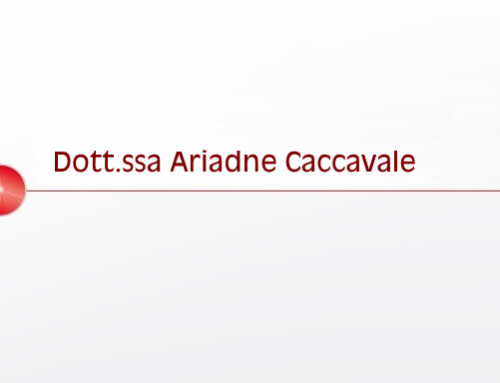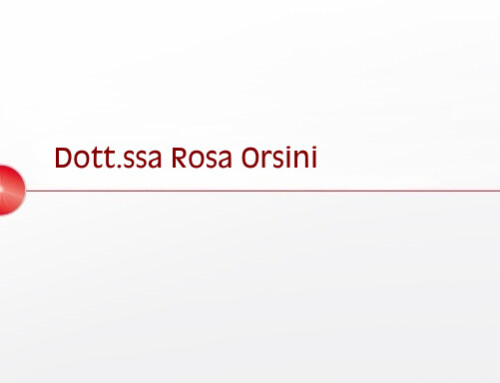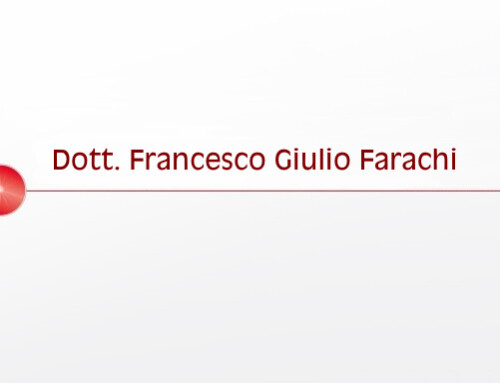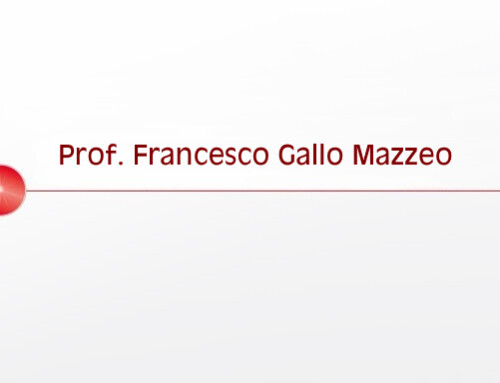
![]()
“L’unico tratto è origine
di ogni cosa, è radice
di tutti i fenomeni.” (1)
Segni e simbologie e miti nell’opera pittorica di Alessandra Casciotti.
Il segno è la testimonianza più concreta del modo umano di comunicare, dal mondo della grafia delle paleoscritture ai linguaggi onirici e immaginari, alla ricerca di un alfabeto metafisico. Simboli, simbologia e segni, antichi e moderni costituiscono di fatto: “l’alfabeto del pensiero”; l’abicì delle emozioni, le tracce tangibili dell’umanità, il giacimento culturale dell’anima dell’uomo e, ancora, sono oramai il moderno messaggio “Multiple in Multiple out”, che gli umani della contemporaneità, sfruttando la velocità della tecnologia, con il multipath delle onde radio, si apprestano a lanciare verso i cieli del prossimo futuro.
Di segni e di simboli è il codice genetico del pensiero dell’umanità, ce lo portiamo appresso dall’eternità; negli appunti che appartengono alla storia e nelle tracce personali della nostra storia. Il segno è il reperto più pregiato dell’archeologia sensibile, è attraverso i segni che siamo riusciti a decodificare le informazioni del mondo speciale dell’inconscio. Come corredo ci portiamo addosso segnali provenienti da altre civiltà che si sono poi mescolati armonicamente, ma che conservano tutt’ora la forza e la vitalità della storia e, per questo, riescono a parlarci sia degli intenti e delle attività del passato, essendosi mantenuti tutt’ora vivi, sia della contemporaneità del “presente” e della natura del nostro tempo.
La messa a fuoco su segni e leggende fa sì che sulla pittura di Alessandra Casciotti, s’accenda un potente “occhio di bue”, ed illumini interamente tutto il suo mondo, il suo palcoscenico fantastico; la sua simbologia risulta di grandissima attrazione; sarà perché ella – in questo caso – usa un alfabeto delicatissimo e suadente per poi mostrarci l’iride dei suoi gioiosi colori. E’ così che, attraverso le sue pennellate sapienti, riesce prima a catturare il nostro sguardo per poi trascinarci istintivamente, verso l’interiorità più profonda, dentro quelle pagine palpitanti della sua maniacale ricerca psicologica, filosofico-antropologica intorno agli enigmi della persona umana.
Qui allora, con il fluire del racconto, le vicende d’arte di Alessandra Casciotti, fanno delle sue opere teatrali e di tutte quelle geometrie dello spazio che richiamano il trascendente, un vero e proprio “strumento cognitivo”, finalizzato alla comprensione della parte più segreta della vita degli umani.
Le mani dell’artista – con maestria e dominio del colore – sono riuscite a tracciare segni unici e luminosi; scenografiche ambientazioni mitologiche e, linee e delimitazione di spazi astratti che risentono delle influenze dei più grandi interpreti del metafisico; Alessandra Casciotti ci narra storie e passioni sussurrandole con un filo di voce, l’artista si mostra, anzi, attraverso le sue creazioni ci mette innanzi la parte più apprensiva della sua anima.
In questo suo modo di “mostrar primavera”, nei suoi approcci razionali che si fanno visione, nell’abbondanza e nella ricchezza dei colori, ella apre sontuosamente le più luminose finestre, sulla profondità più sconosciuta, dentro ai paesaggi concepiti e vivi nella sua mente.
Scene d’incanto che seducono e si lasciano ammirare, intorno alle quali vibrano soffuse armonie e suoni ammalianti tutti da captare. Ci racconta della sua e della nostra unicità, del nostro modo di essere; di storie esclusive ed irripetibili; è qui che s’appalesano i nostri pensieri, qui si manifesta tutto quello in cui abbiamo creduto, vengono alla luce qui le nostre speranze più amate; e, come in uno specchio, vengono a galla e si lasciano vedere sia ciò che siamo riusciti a diventare e, quello che avremmo – invece – desiderato di essere.
Nelle geometrie primarie si nascondono segreti, le linee giungono dai tagli scavati nella roccia in epoche protostoriche e diventano straordinariamente segmenti binari per la comunicazione del tempo del futuro. Segni e simboli uniscono il tempo dell’umanità in un unico codice, misterioso, illuminante ed evocativo.
Questa è la peculiarità del linguaggio artistico di Alessandra Casciotti, una splendida esternazione culturale del suo inconscio. E’ un’artista che ha saputo unire alla tecnica e ai colori, la fantasia, lo studio delle scienze, della storia, della mitologia e dell’antropologia. Le sue narrazioni, anche quando sono apparentemente un’evocazione leggendaria o una delimitazione, o ancora una ricostruzione e pianificazione dello spazio, risultano contestualmente un’appassionata confessione intima, un riaffiorare in superficie della rete delle emozioni e delle speranze che da sempre condiscono la vita.
Mi piace ricordare che come la grande letteratura del 900 ha stigmatizzato, “Scrivere è prendere l’impronta dell’anima”, anche la pittura ha capacità superba per proporne e rendere visibili, scene e misteri portati nel cuore; ed è ancora più bello sottolineare il pensiero di Simonide il greco, che affermò: «la pittura è una muta poesia e la poesia una pittura parlante».
Alessandra Casciotti affida alle sue opere pittoriche il suo testamento culturale e il suo “personalissimo deposito” per l’umanità che verrà e, lo fa con la forza degli artisti veri, con un ritmo di versi a colori scandito, come i colpi tuonanti, del martellare di un tamburo:
Di me non c’è traccia negli anni
se non come raccontano un viaggio
le impronte sulla sabbia d’un deserto. (2)
La pittrice sa che anche le impronte più piccole lasciano un segno in questo mondo e, avendo scelto di camminare insieme agli artisti, continua splendidamente a trascrivere belle storie affidandosi a cromie e toni decisi, per proporre la ricchezza del suo scenario mai visto, frutto del pensiero invisibile, al quale molte volte il solo occhio umano – senza il pulsare della membrana del cuore – non basta.
Rosario Sprovieri 6 Agosto 2018
- note
- (Shitao, pittore di epoca Qing – XVII sec.).
- Mario Luzi, Forse dice l’addio, in Primizie del deserto.
![]()
“The only trait is origin
of everything, it is the root
of all phenomena”
Signs and symbolism and myths in Alessandra Casciotti’s pictorial work.
A Sign is the most concrete testimony of the human way of communicating, from the world of palaeographic characters to the dreamlike and imaginary languages, in search of a metaphysical alphabet. Symbols, symbology and signs, ancient and modern constitute in fact: “the alphabet of thought”; the alphabet of emotions, the tangible traces of humanity, the cultural deposit of mankind’s soul and, moreover, are now the modern message “Multiple in Multiple out”, that modern age humans, exploiting the speed of technology with the multipath of radio waves, are about to launch towards the skies of the near future.
Signs and symbols constitute the genetic code of the thought of humanity, we carry it with us from eternity; in the notes that belong to the story and in the personal traces of our history. A Sign is the most valuable finding of sensitive archeology, it is through signs that we have been able to decode the information from our unconscious’ world. As a package we carry signs from other civilizations that have harmoniously mixed, but which still retain the strength and vitality of history and, for this reason, are able to speak to us of the intentions and activities of the past, having remained alive, both of the contemporaneity of the “present” and in the nature of our time.
Focusing on signs and legends allows Alessandra Casciotti’s paintings to be lit up by a powerful stage light which enlightens her whole world, her fantastic stage; her symbolism is of great attraction; it is probably because she – in this case – uses a very delicate and persuasive alphabet to show us the iris of her joyful colors. This is how, through her skilful brushstrokes, she first succeeds in capturing our gaze and then drags us instinctively towards the deeper interiority, within those throbbing pages of her maniacal psychological, philosophical-anthropological research around the enigmas of the human person.
Here then, with the flow of the story, Alessandra Casciotti’s artistic events, make her theatrical works and all those geometries of space that recall the transcendent, a true “cognitive tool”, aimed at understanding the most secret part of human life.
The artist’s hands – with mastery and knowledge of color – have managed to draw unique and luminous signs; scenographic mythological settings and lines and delimitation of abstract spaces that are influenced by the greatest interpreters of the metaphysical; Alessandra Casciotti tells us stories and passions whispering with a soft voice and the artist shows herself, indeed, through her creations and puts us before the most apprehensive part of her soul.
In this way of “showing spring”, in her rational approaches that become visions, in the abundance and richness of the colors, she lavishly opens the most luminous windows, on the most unknown depth, inside the landscapes conceived and alive in her mind.
Enchanting scenes that seduce and let themselves be admired, around which soft harmonies and bewitching sounds vibrate, all to be captured. She tells us about her and our uniqueness, about our way of being; of exclusive and unrepeatable stories; it is here that our thoughts are raised, here is manifested all that we have believed, here come to light our most beloved hopes; and, as in a mirror, they come to the surface and let themselves be seen both for what we have been able to become and, what we would have – instead – desired to be.
In the primary geometries there are secrets hidden, the lines come from the cuts carved into the rock in protohistoric times and become extraordinarily, binary segments for the communication of the future. Signs and symbols combine the time of humanity in a single code, mysterious, illuminating and evocative.
This is the peculiarity of the artistic language of Alessandra Casciotti, a splendid cultural expression of her unconscious. She is an artist who has been able to combine technique and colors, fantasy, the study of science, history, mythology and anthropology. Her narratives, even when they are apparently a legendary evocation or a delimitation, or even a reconstruction and planning of space, are contextually a passionate intimate confession, a resurfacing of the network of emotions and hopes that have always led life.
I like to remember that as the great literature of the 20th century has stigmatized, “Writing is taking the imprint of the soul”, painting too has superb capacity to propose and make visible, scenes and mysteries kept in the heart; and it is even more beautiful to underline the thought of Simonide the Greek, who stated: “painting is a mute poem and poetry a talking painting”.
Alessandra Casciotti entrusts to her paintings her cultural testament and her “personal deposit” for the coming humanity and she does it with the strength of the real artists, with a rhythm of colored verses punctuated like thundering blows, like the hammering of a drum:
There is no trace of me over the years
if not as they tell a journey
the footprints on the sand of a desert. (2)
The painter knows that even the smallest footprints leave a mark in this world and, having chosen to walk with the artists, she continues to beautifully transcribe beautiful stories relying on colors and bold tones, to propose the richness of her never seen scenery, fruit of invisible thought, to which many times the human eye alone – without the pulsation of the membrane of the heart – is not enough.
Rosario Sprovieri 6 Agosto 2018
- note
- (Shitao, pittore di epoca Qing – XVII sec.).
- Mario Luzi, Forse dice l’addio, in Primizie del deserto.




